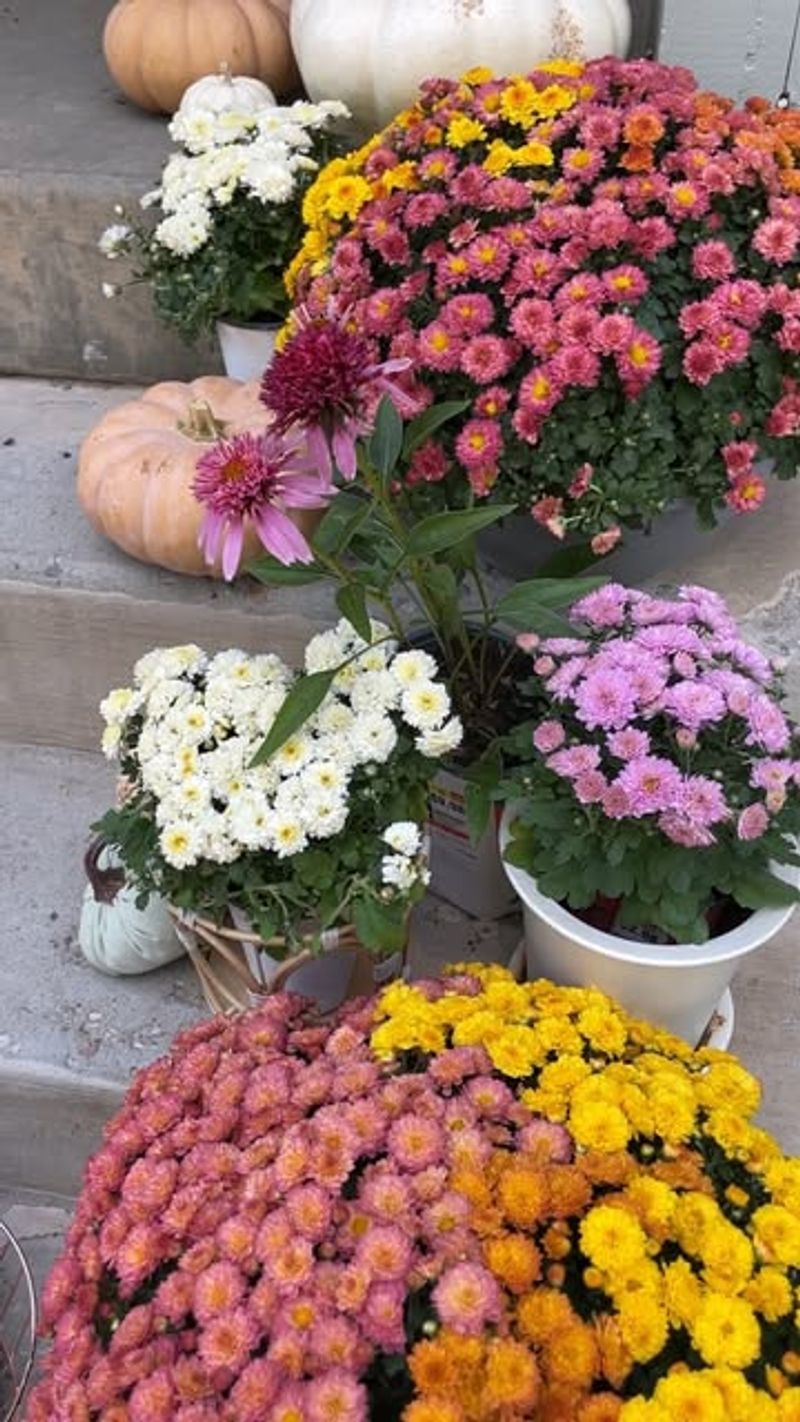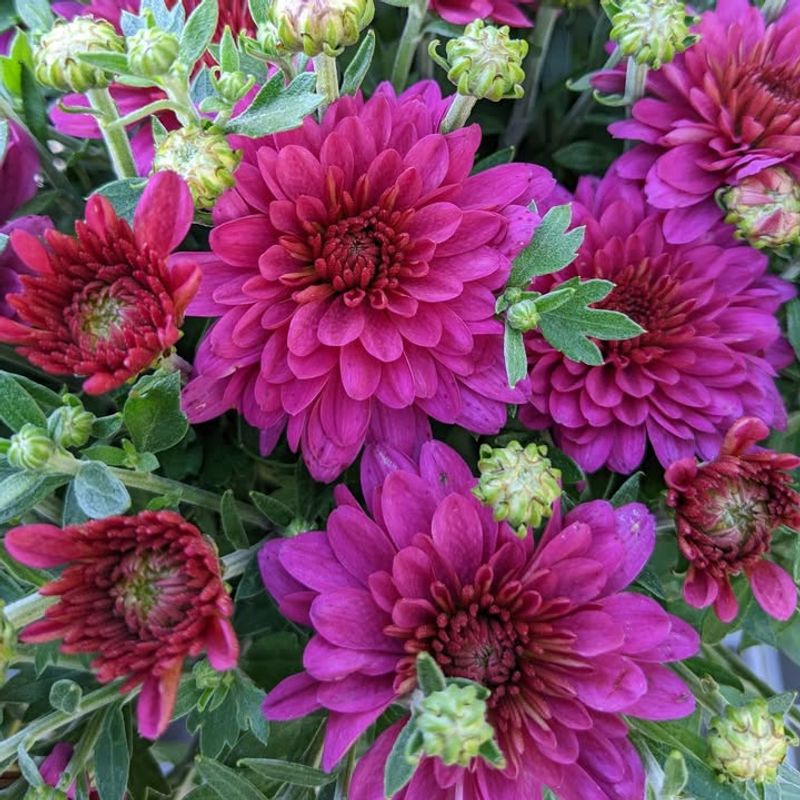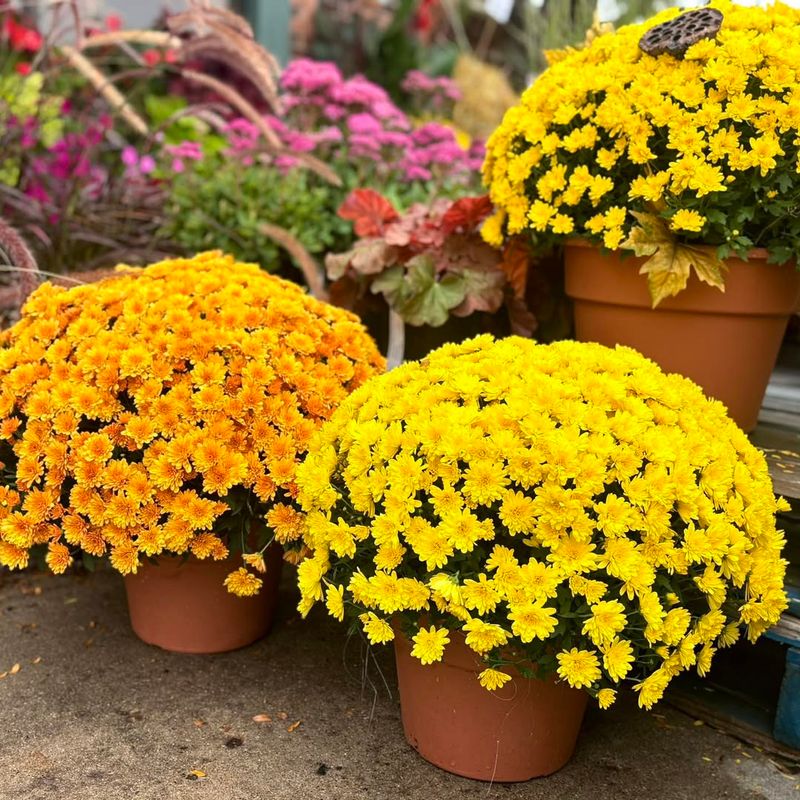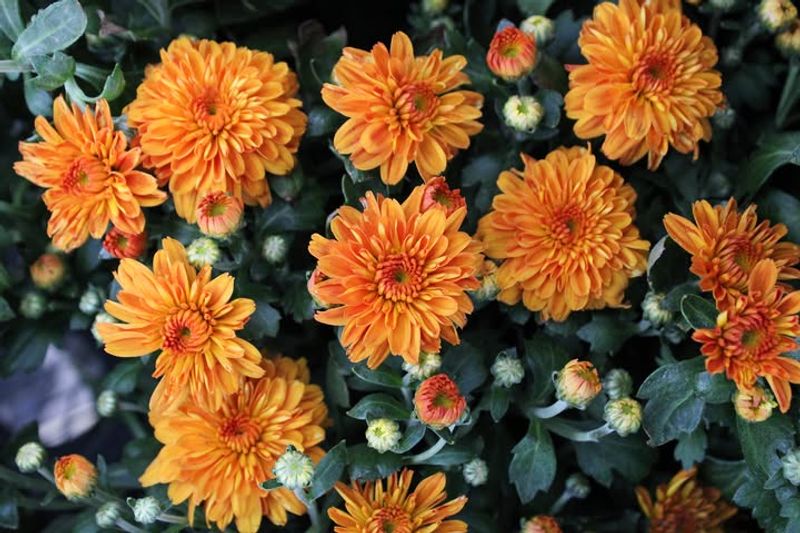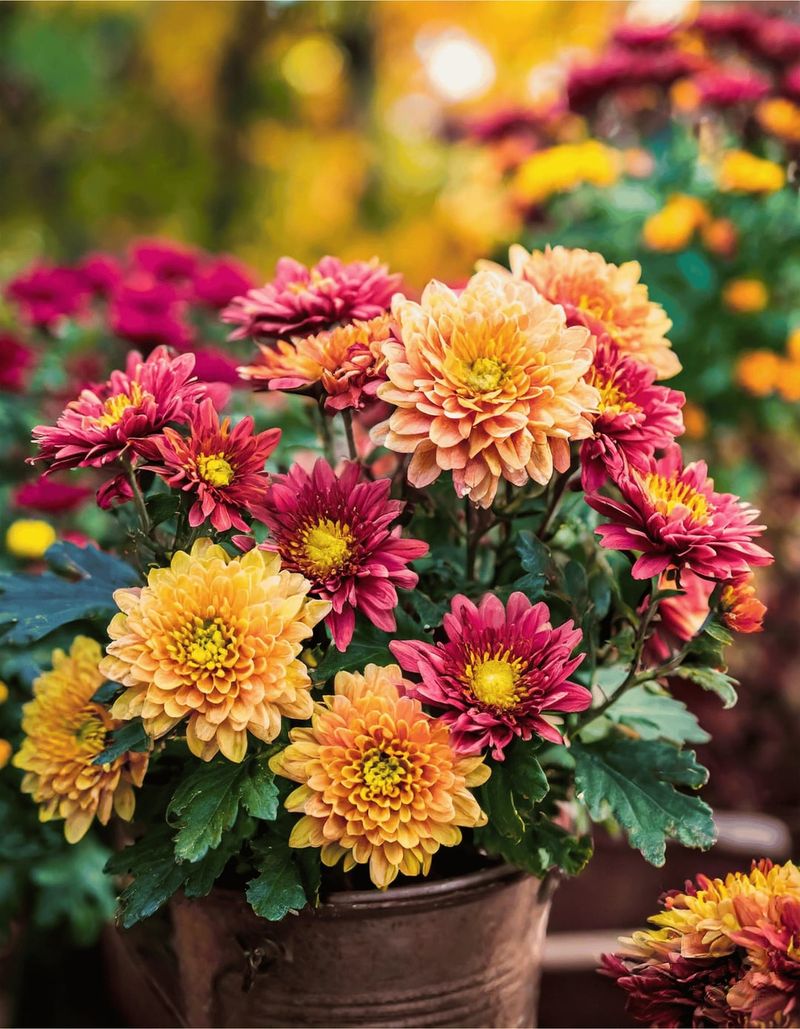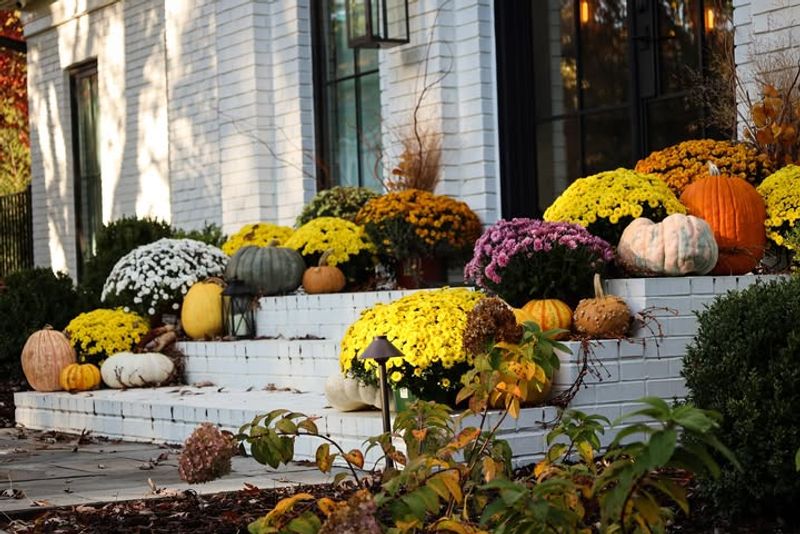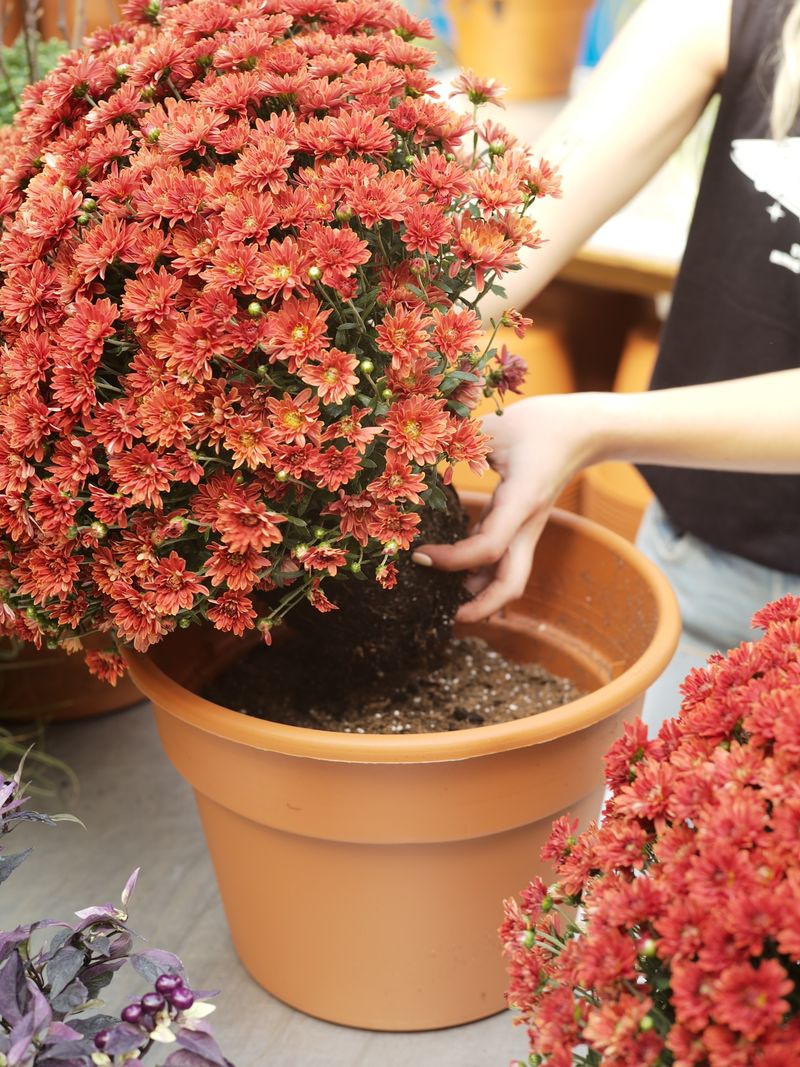Fall mums light up Oregon gardens just as summer blooms begin to fade. Their bold colors add warmth and cheer to chilly autumn days. Still, many gardeners find these beauties tricky to keep alive through the season. A few common missteps can quickly turn vibrant mums into droopy disappointments.
I’ve found that most issues are easy to fix once you spot the signs. With the right care, your mums can stay stunning well into fall.
1. Planting Too Late In The Season
Oregon’s fall weather can turn cold quickly, catching many gardeners off guard. Mums need at least six weeks to establish strong roots before the first frost hits. When you wait until late October or November, your plants won’t have enough time to settle in.
Shop for mums in late August or early September instead. Earlier planting gives roots time to grow deep and strong. Your mums will reward you with better blooms and a much higher chance of surviving winter temperatures.
2. Choosing The Wrong Mum Variety
Not all mums are created equal when it comes to surviving Oregon winters. Garden centers sell both hardy perennial mums and florist mums, which are basically annuals dressed up to look fancy. Florist varieties rarely make it through cold months, no matter how well you care for them.
Look for labels that say hardy or garden mums specifically. These varieties can handle Oregon’s wet, chilly winters. Ask nursery staff which types work best in your specific growing zone for guaranteed success.
3. Overwatering In Oregon’s Rainy Climate
Oregon gets plenty of rain during fall, but many gardeners keep watering like it’s still summer. Mums sitting in soggy soil develop root rot fast, turning leaves yellow and causing flowers to drop prematurely. Too much moisture invites fungal diseases that can kill your plants within days.
Check soil moisture before grabbing the hose. Stick your finger two inches down into the dirt. Only water when the soil feels dry at that depth, and make sure containers have drainage holes.
4. Ignoring Proper Drainage Needs
Mums absolutely hate wet feet, which makes drainage crucial in Oregon’s damp climate. Many gardeners plant directly into heavy clay soil without improving it first. Water pools around roots instead of draining away, creating perfect conditions for disease and rot.
Mix compost or perlite into planting holes to improve drainage significantly. Raise beds a few inches if your yard has clay soil. For containers, use quality potting mix and ensure multiple drainage holes exist at the bottom.
5. Skipping Deadheading And Maintenance
Spent blooms don’t just look messy—they actually drain energy from your mums. When faded flowers stay on the plant, it tries to make seeds instead of producing new buds. This shortens your bloom time considerably and makes plants look scraggly.
Pinch off dead flowers every few days using your fingers or small scissors. Remove any yellowing leaves while you’re at it. Regular grooming keeps mums blooming longer and looking fresh throughout the entire fall season.
6. Placing Mums In Too Much Shade
Oregon’s cloudy fall days already reduce available sunlight for plants. When you place mums under trees or on north-facing porches, they struggle to bloom properly. Flowers stay small and sparse, while stems stretch out searching for light, making plants look leggy and weak.
Position your mums where they’ll receive at least six hours of direct sunlight daily. South or west-facing spots work best. Even during cloudy weather, these locations capture the most available light for healthy growth and abundant blooms.
7. Forgetting To Fertilize Appropriately
Mums are heavy feeders that bloom like crazy during fall. Without proper nutrition, flowers fade quickly and colors look washed out. Many gardeners assume Oregon’s rich soil provides everything plants need, but blooming depletes nutrients rapidly.
Feed mums every two weeks with a balanced liquid fertilizer until buds start opening. Once flowers appear, switch to a low-nitrogen formula to encourage blooming rather than leaf growth. Stop fertilizing completely when temperatures drop below 50 degrees consistently.
8. Not Protecting From Early Frost
Oregon can experience surprise frost nights even in early fall. One cold snap can blacken mum flowers overnight, ending your display weeks early. Gardeners often assume plants are tougher than they actually are, leaving them completely exposed.
Watch weather forecasts closely during September and October. Cover plants with old sheets or frost blankets when temperatures threaten to dip below 32 degrees. Move container mums closer to the house where walls radiate heat. Simple protection extends bloom time significantly.
9. Planting In Containers Without Winter Care Plans
Container mums face harsher conditions than ground-planted ones since roots are more exposed to freezing temperatures. Pots dry out faster and freeze solid during cold snaps. Without proper winter protection, container mums rarely survive until spring, disappointing gardeners who expected perennial performance.
Sink entire pots into garden beds for winter insulation. Alternatively, move containers to unheated garages or wrap them with bubble wrap. Mulch heavily over the top after plants go dormant. These steps dramatically improve survival rates for spring.


